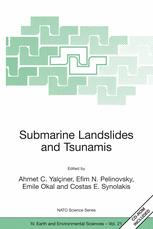

Most ebook files are in PDF format, so you can easily read them using various software such as Foxit Reader or directly on the Google Chrome browser.
Some ebook files are released by publishers in other formats such as .awz, .mobi, .epub, .fb2, etc. You may need to install specific software to read these formats on mobile/PC, such as Calibre.
Please read the tutorial at this link: https://ebookbell.com/faq
We offer FREE conversion to the popular formats you request; however, this may take some time. Therefore, right after payment, please email us, and we will try to provide the service as quickly as possible.
For some exceptional file formats or broken links (if any), please refrain from opening any disputes. Instead, email us first, and we will try to assist within a maximum of 6 hours.
EbookBell Team

4.1
80 reviewsTsunamis are water waves triggered by impulsive geologic events such as sea floor deformation, landslides, slumps, subsidence, volcanic eruptions and bolide impacts. Tsunamis can inflict significant damage and casualties both nearfield and after evolving over long propagation distances and impacting distant coastlines. Tsunamis can also effect geomorphologic changes along the coast. Understanding tsunami generation and evolution is of paramount importance for protecting coastal population at risk, coastal structures and the natural environment. Accurately and reliably predicting the initial waveform and the associated coastal effects of tsunamis remains one of the most vexing problems in geophysics, and -with few exceptions- has resisted routine numerical computation or data collection solutions. While ten years ago, it was believed that the generation problem was adequately understood for useful predictions, it is now clear that it is not, especially nearfield. By contrast, the runup problem earlier believed intractable is now well understood for all but the most extreme breaking wave events.